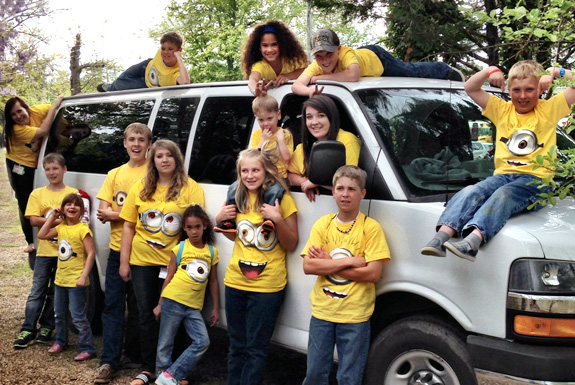11 tips for building strong relationships among family members
Preparation, communication, and awareness are three keys to successfully integrating an adopted child into your family

Bringing a new child into your family—whether through birth or adoption—can be both scary and exciting for everyone involved. While there are many unknowns when expanding your family, there is also a great deal you can do to prepare yourself and your children for the transition.
We offer the following suggestions—shared by parents and professionals—to help you create a smooth transition and build strong relationships among all members of your family. Of course, our overriding suggestion is that when challenges arise that you do not feel comfortable addressing, seek help from your caseworker and other professionals.
- Involve your birth children in the process of adopting, as is appropriate for their age. You don’t need to ask their permission, but do make them part of the process. Talk with them about a new brother or sister coming into the family in ways that are positive. Consider bringing them to a panel presentation to hear from other adoptive families and to adoption matching events.
- Slowly transition your new child into your family, if possible. Have weekend visits to get acclimated to one another. Bring your pre-adoptive child on a family vacation, if allowed. Be sure to include your birth children in pre-placement visits.
- Share information—as appropriate—with your birth children about how the child you are adopting came to be in care. Even if your children don’t ask, they will be curious and they will be asked this question by others. It is important for your birth children to know that their new sibling did not do anything wrong and is in foster care because their parents could not take care of them and keep them safe.
- Know that you will be much busier, especially in the first six months. Try to get extra help around the house. Cut back on the “shoulds” of your life to free up as much time as possible for your children, your partner, and—don’t forget—yourself.
- If adopting out of birth order or adopting children of the same age as children already in the family unit, pay particular attention to the needs of each child as they adjust to their new position in the family. It is not necessary or even possible to treat all children equally, but it is important to treat them fairly according to their needs.
- Help your birth children to understand that their new siblings may not have gotten all the attention or care a child needs when they were younger. Because of that, they may need more of Mom’s or Dad’s attention for some time. Give your children the message that you will do all you can to meet everyone’s needs and that each of them is treasured.
- Recognize that if you adopt an older child and then have a baby by birth, the child who was adopted may feel insecure about their status in the family—and will likely be unable or afraid to express these emotions. Address these issues openly and honestly from the start. You might share the story of the older child’s arrival, including the preparations and anticipation that occurred before the adoption. If you have information about their birth that you can share, do that too.
- Create opportunities to have one-on-one time with each of your children. For example, set aside one night a month to go to dinner, on a hike, play mini-golf, or do some other activity that requires communication.
- Look for the special talents or attributes of each of your children and elevate them openly to help them each feel valued without comparison. For example, you may have one who is an artist, one who is a mathematician, and one who is a writer. When school projects are assigned, these three siblings can be each other’s support and mentor, therefore building their connections to one another.
- Make sure race and culture are values that are talked about with all of your children in positive ways to support their sense of confidence in a world that may judge or question your family’s makeup. This is especially important when building a transracial family and adopting a child of a different culture.
- Create family traditions. Like establishing routines, making family traditions helps to create the sense of stability that is so important to children. It is also an opportunity to recognize and celebrate the heritage of a child from a different cultural background.
Read more about integrating adopted children into a family that includes birth children in “Adoption & Sibling Relationships: What Children Have Taught Me,” an article on the website of the North American Council on Adoptable Children.
